World War 2.5 – Gaming An Alternate History [Part Three]
March 2, 2015 by crew
Backstage Rules Pack Download
The thunder of artillery still echoes across the hypothetical battlefields of 1946 Germany where, after a year of uneasy peace, the former Allies of World War II have been hurled into all-out conflict against each other. Certainly this is far more than a “Cold War,” yet not quite a “World War III.” Instead it is World War 2.5, where the winning armies that liberated Europe are now head-to-head in a conflict many people of the day thought was inevitable. Thankfully for all of us, they were wrong.
The date is June 10, 1946. The Soviet invasion of West Germany is now a week and a half old (see Part One or Part Two of our article series). To the north, the ten divisions of the Soviet 1st Baltic Front have taken Hamburg, reached the Danish border, cut the Kiel Canal, and reached the outskirts of Bremen. To the south, the 2nd Southwestern and 1st Balkan Front are having a harder time in the mountains of Bavaria.
The real battle remains in the center, where four Soviet “Fronts” (some 750,000 men) have pushed to a jagged line running from Hannover in the north to Nuremberg in the south. The Soviets, however, are about to commit their reserves.
BLOCKING ALLIED COUNTERATTACK - June 10, 1946
Among these reserves are a Soviet guards mechanized brigade and an independent heavy tank regiment of the 1st Guards Tank Army, driving toward the critical town of Würzburg. Instead of being committed to the final push, these reserves find themselves diverted to head off a French counterattack that has just caved in the army’s right wing. The vanguard of this Soviet “stabilizing” detachment is a mixed-arms battalion drawn from the heavy tank regiment and the mechanized brigade’s infantry and T-34s.
The commander of this force, a young guards captain who “cut his officer’s teeth” in Berlin last year, has no illusions what the consequence of failure will be. Meanwhile, his armoured car scouts report that the French have stopped advancing, instead taking up defensive positions. The Soviets have been spotted, and the French are waiting. 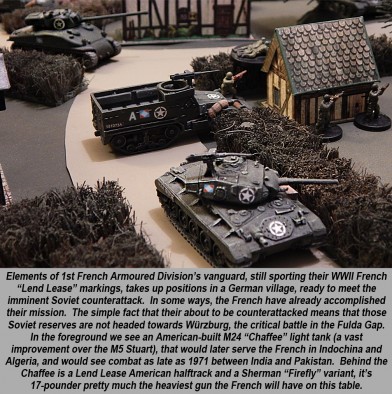
As the Soviets press on, their dread only deepens. The French are deployed in a thick patch of Bavarian hills and forest, with only narrow, winding roads connecting tiny hamlets, the worst country for heavy Soviet armour. Sure enough, the captain’s worst fears are realized when a French Dewoitine D520 fighter dives out of the sun and machine guns the truck carrying his Katyusha rocket launchers into flaming wreckage.
The Soviets fight back, with lighter T-34s tackling the high ground to the left, IS-2 heavy tanks in the center, and IS-3 heavy tanks forming a powerful right hook through the woods to the north. But the faster French tanks, a mix of Sherman variants and M24 Chaffees, have plenty of time to re-position in optimum ambush spots, particularly against the Soviet right. However, the Soviet captain orders his mortars to drop a smoke screen in front of some of the French ambush positions. It buys the IS-3s just enough time to crack the French wing.
The Soviets also score heavy successes on their left wing, where nimble T-34s are able to shut down French Shermans trying to turn the Soviet flank. But the French fight back furiously, making the most of their advantages in numbers, artillery, and agility over this rugged terrain. Chaffees hit IS-3s in the flank, one even using the Soviets’ own smokescreen as cover against them.
Only when the Soviets fold up both wings is French resistance in the center finally overcome. At last, the young Soviet captain (shaken and sickened by the slaughter) is able to report success to his superiors back at brigade HQ. The colonel promises him the Order of Suvorov for his efforts that day, proclaiming that this victory has helped stabilize the Soviet drive on Würzburg. Secretly our captain fears the French may deserve such accolades more than he.
RESISTANCE OPERATIONS IN POLAND - June 11, 1946
Not all the action is taking place on the front line of course. Deep in Soviet-occupied Europe, especially in Poland, embers of rebellion have been rekindled into flame by the outbreak of war in Germany. “Armia Krajowa” is the Polish “Home Army” that fought so hard against both German and Soviet occupiers (Poland was divided in 1939 between the two invaders, remember). The Armia Krajowa also fought against Soviet occupation forces even after V-E Day, and now sees another opportunity to perhaps win freedom for Poland.
A small detachment of the Armia Krajowa has decided to hit a Soviet troop convoy as it makes its way through Silesia. They strike when the convoy is crossing a bridge over the Bóbr River, hitting the first and last vehicles in the column in an attempt to trap it on the bridge. In the chaos that ensues, most of the Soviet convoy is destroyed, although the resistance fighters take surprisingly heavy losses after many of their bazookas miss. Still, this is a Polish win, with the survivors vanishing into the woods to lick their wounds and strike another day. Special thanks to Beasts of War community members @lblunchboxlb, @radegast6, and @yavasa for suggesting and helping with this great idea after our first article. 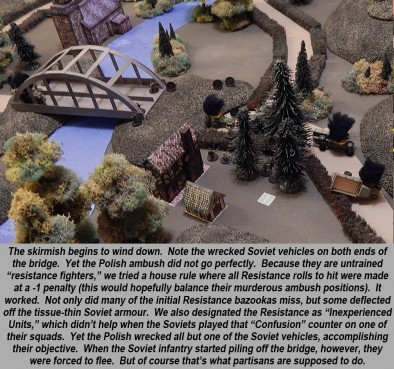
HEAVYWEIGHTS ON THE AUTOBAHN - June 13, 1946
At last, Nuremberg is about to fall. After an apocalyptic six-day fight that has cost the Soviets dearly in lives, equipment, and worst of all time, the German and American defenders of the city have to withdraw. A counterattack mounted by the US 9th Armoured (the same division that captured the historic Remagen Bridge over the Rhine) has opened an escape corridor to the west. Now the exodus begins, endless streams of civilians making their way west along the Nuremberg-Frankfurt autobahn.
Along the way they pass hilltops crowned with American and West German units, ready to fire over the civilians’ heads if a Soviet advance guard appears. The eastern sky glows red by night and is smudged black by day. Nuremberg is burning.
The men of one West German detachment, the 1st Bundeswehr Panzer Brigade, know they’ll never make it. Their unit is equipped with leftover heavy tanks, assault guns, and tank destroyers, vehicles that drink too much fuel and move too slow to ever reach Frankfurt. Rather than abandon their vehicles and join the civilian retreat, this ad-hoc “kampfgruppe” decides to disobey orders, turn around on the autobahn and slam the lead Soviet spearhead head-on.
There they will fight as long as possible, then blow up their equipment before scattering into the woods. Along their way, they pass other German units in the night, Panthers, Lend-Lease Shermans, grenadiers in halftracks, who decide to join them. They meet the Soviets as dawn breaks on June 13, squaring off along the abandoned superhighway. Their opponents are the lead elements of the 25th Tank Corps, spearheaded by their integral shock regiment of heavy armour and assault guns.
The West Germans deploy in a crossfire astride the autobahn, but also set up strong forces to hold the wings. There is talk among the officers about engaging the Soviets at night, since their one Panther has one of the new FG-1250 infrared gun sights (yes, Battlegroup: Fall of the Reich does have rules for these and other IR devices). But the rest of the kampfgruppe would be blind, so instead they wait until first light.
Confident in the thickness of their armour (and the weight of their numbers) the Soviets send their main assault straight down the highway. The Jagdtiger is the first to open up, its huge 128mm gun blowing the turret clean off the lead IS-3. The two hand-me-down Shermans open up on lighter armour, although one lucky round actually “pins” another IS-3. Furious firefights erupt between squads of grenadiers and guardsmen, supported by the machine guns of halftracks and BA-64 armoured cars.
The Soviets make a push around the German left, the kampfgruppe commander dispatches the Jagdpanther to redress the situation. The Soviets also push around the right, with the Panther ambushing the first SU-100. This wing soon caves and it’s up to the grenadiers with “panzerfaust” rockets to kill the last SU-100 and shut down this thrust as well.
In the end however Soviet airpower turns the tide and they win the day. The German survivors, destroying all their equipment behind them, scatter into the thick forests of southern Germany, there to carry on the fight as guerrillas. In front of them, the “victorious” Soviet spearhead is in shambles. Behind them, the rest of the Allied and civilian columns are soon under the protection of the US 9th Armoured. Nuremburg is lost, but many of its defenders will fight another day.
By June 14, our “World War 2.5” is reaching a critical juncture. Disintegrating Allied lines have the Americans ever more ready to turn to her nuclear option. Soviet losses, meanwhile, are quickly draining her reserves, which aren’t quite bottomless after all. Diplomats are working frantically for a cease-fire, but can peace really come with millions of Soviet troops on West German soil? Check back next week for the final part of our series, and see how “World War 2.5” concludes.
The Series:-
- Part One: The Floodgates Open
- Part Two: The Big Push
- Part Three: Valiant Heroics
- Part Four [Finale]: The End?
If you would like to write an article for Beasts of War then please contact me at [email protected] for more information!
"...four Soviet “Fronts” (some 750,000 men) have pushed to a jagged line running from Hannover in the north to Nuremberg in the south. The Soviets, however, are about to commit their reserves."
Supported by (Turn Off)
Supported by (Turn Off)
"Rather than abandon their vehicles and join the civilian retreat, this ad-hoc “kampfgruppe” decides to disobey orders, turn around on the autobahn and slam the lead Soviet spearhead head-on."
Supported by (Turn Off)





























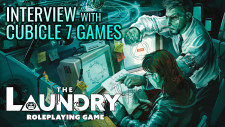

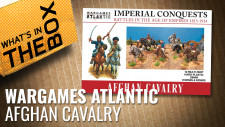

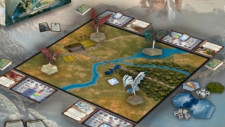

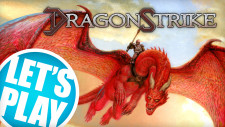





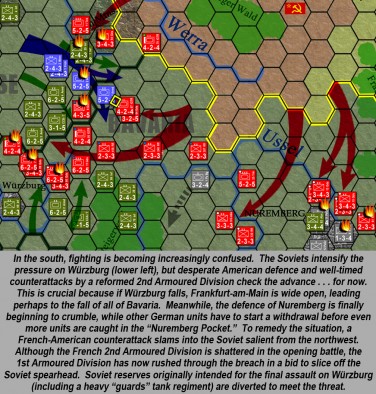
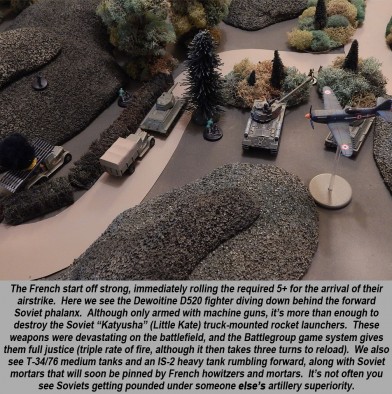
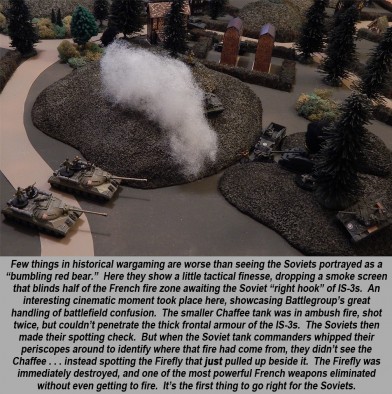

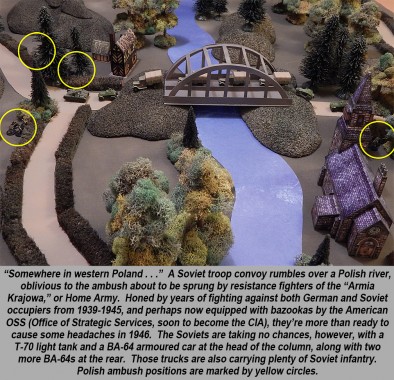
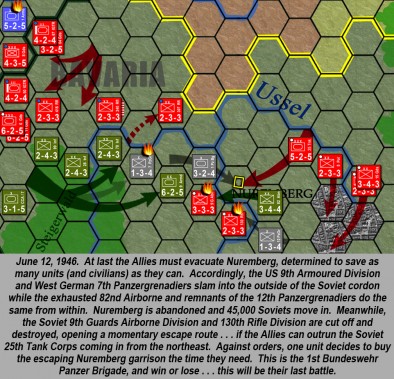
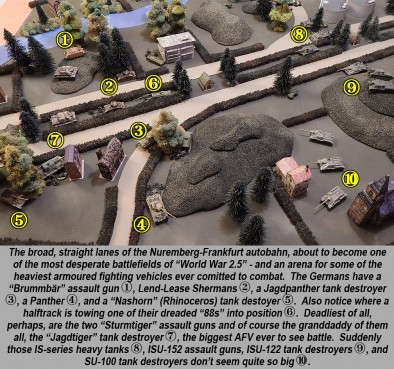
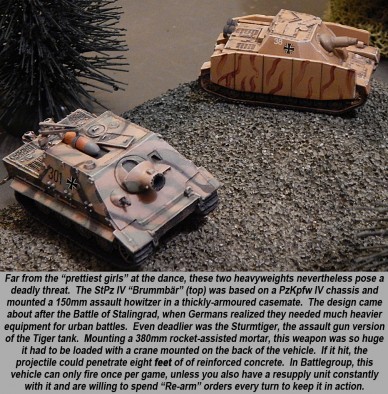
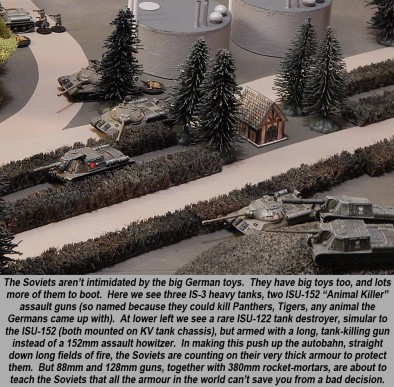
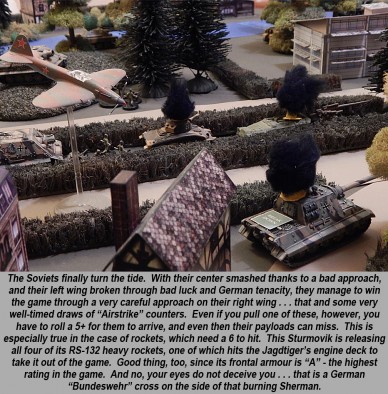

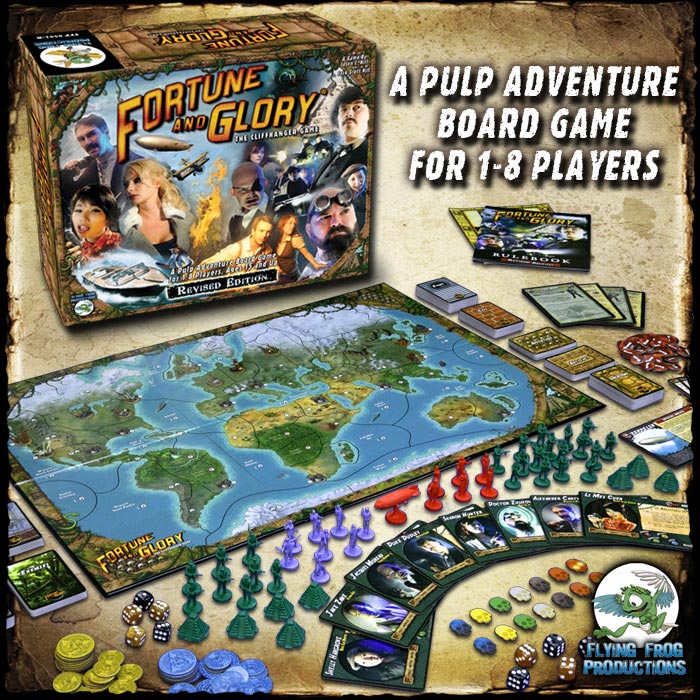

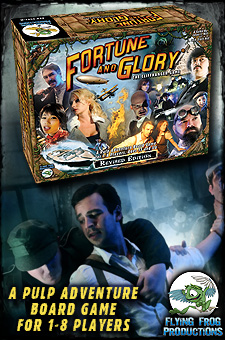
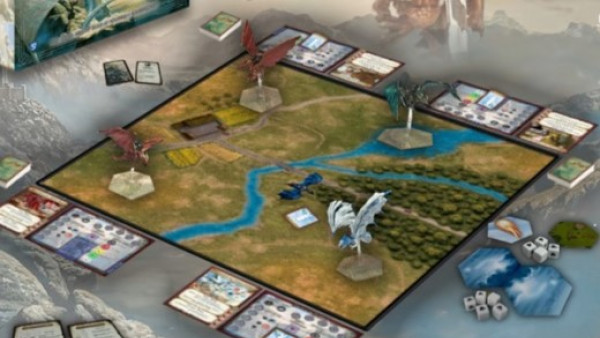
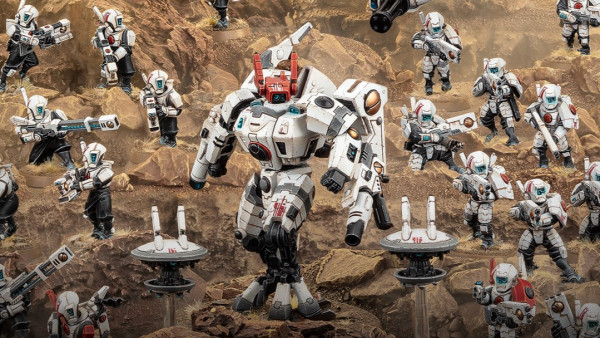
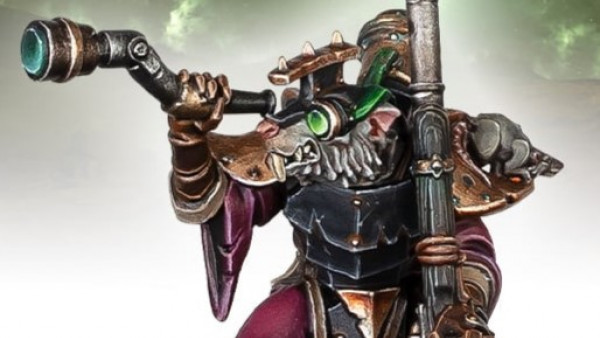
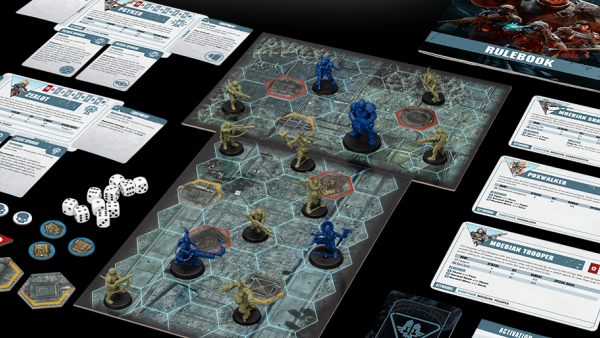
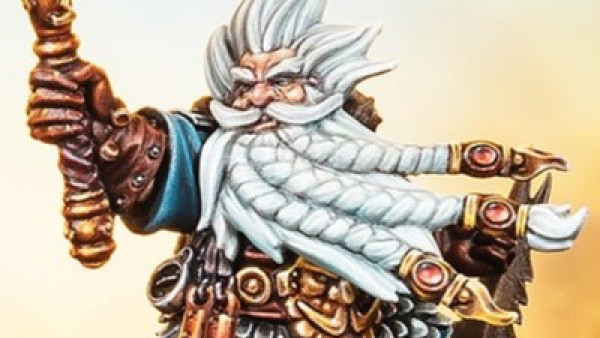

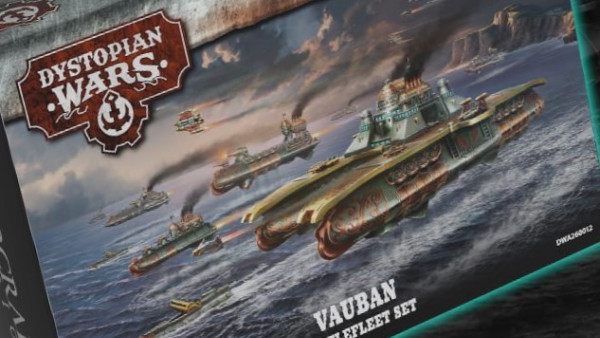
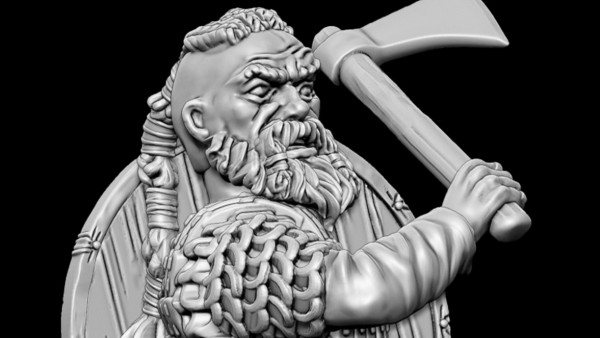



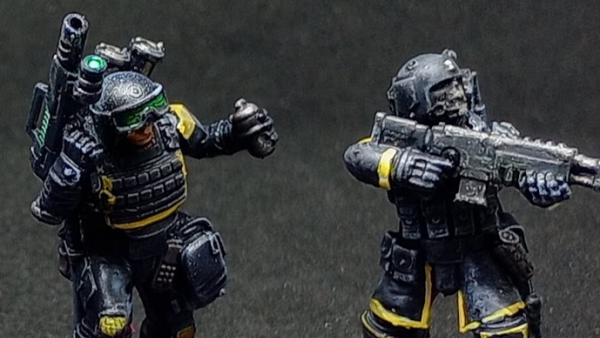
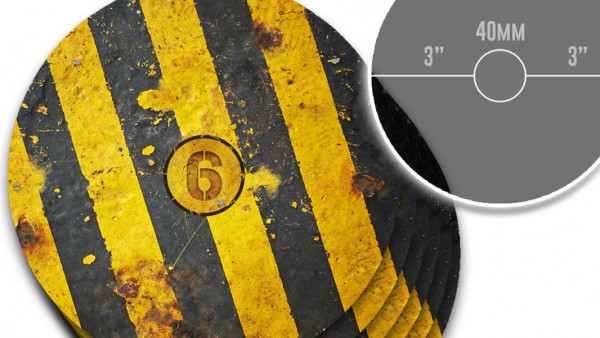












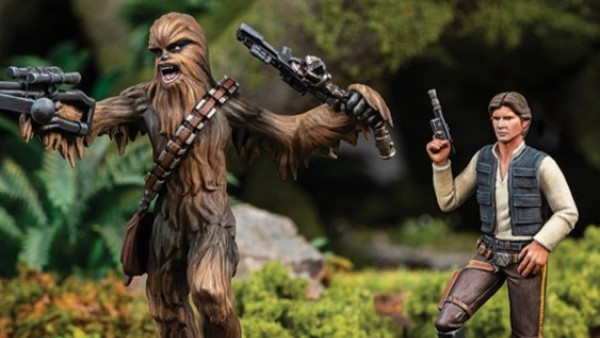
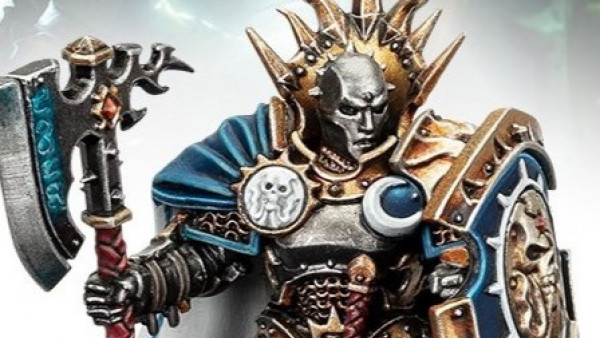
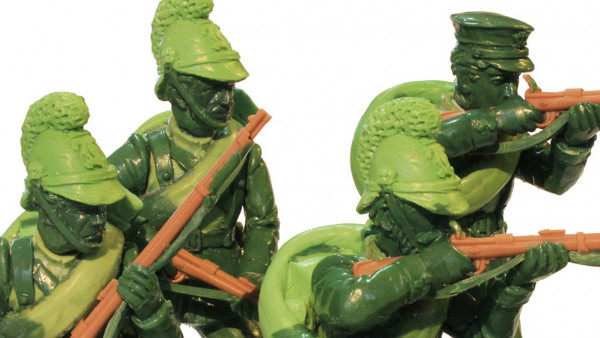

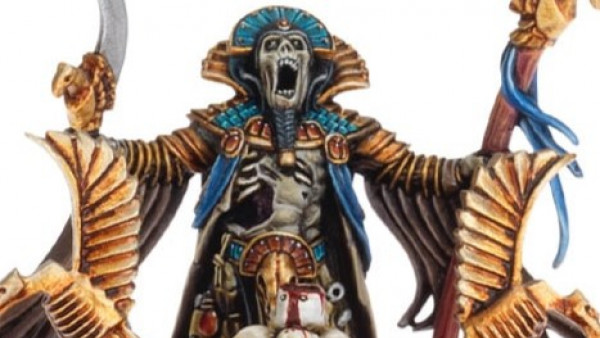
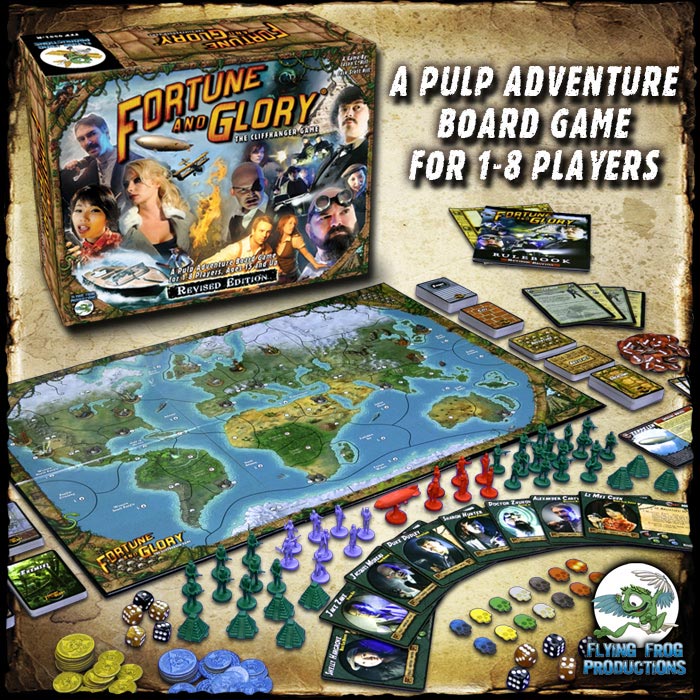

Gotta say – was on the edge of my seat with this one. The final confrontation was intense and love the narrative twist to things as well building characters from the battles 🙂
BoW Ben
I completely agree with @brennon. I can’t wait for the next instalment of this series.
Thanks, @brennon and @teabaron . A lot of the commentary from the previous parts suggested that these articles were starting to sound like novels, so I decided to go with it. As far as the last battle goes, I just wanted a chance to use the super-heavies like Jagdtigers and Sturmtigers. You almost never get a chance to use these kinds of units in “historical” games, so we figured now was the time! 🙂
Dude…LEGIT! Everything looks awesome. I especially love your new SturmMoser. Damn that thing look fantastic. Gotta run back to work but I’ll check back in.
Thought you’d like the Sturmmörser / Sturmtiger. Always one of our favorites. Glad I finally got a chance to use them. 😀
Kudos @oriskany for including the Poles! The AK sure gave the Soviets a bloody nose! After seeing how adaptable the Battlegroup rules are for a wide variety of engagements, I’m definitely going to get a copy and try it out with my 1/72 scale collection. Also loved seeing World of Tanks on the tabletop with the autobahn battle! 🙂
Absolutely, @lblunchboxlb . That’s one Soviet troop convoy that’s going to have to make other travel arrangements. Thanks again for the idea (along with @radegast6 and @yavasa ). I hope you saw where you you called out in the article. 😀 The larger-scale WW2.5 divisional-level game has mechanics for “interdiction” and “counter-interdiction” (attacks vs. enemy rear areas and supply lines) which I initially imagined would be airstrikes, etc. But there’s no reason these couldn’t also be underground armies in Poland, Czechoslovakia, or even East Germany . . . not to mention detachments of Soviet airborne, SPETZNAZ (although I don’t they’d… Read more »
I saw the shout out and thank you! It’s good knowing that myself and others were able to contribute to such an awesome project!
I totally agree! Who needs high speed sports car chases down the autobahn when you can have Stalin 2’s battling it out with a jagdtiger!
“Let’s have a race . . . your Ferrari vs. my 88mm shell.”
BOOM [sports car hits the pavement with a crunch of burning metal and plastic]
Oh, look. I won again.
This is just brilliant. Always look forward to reading this article series will you be putting it out as a short story at the end of the series or at some point in time ?
Fantastic stuff @oriskany. Things really are heating up.
Thanks, @tanya . Not sure if BoW would be into publishing game-related fiction or not. There was talk of a “Fiction Friday” serialized monthly fiction (four-part stories, one part each week), but I haven’t heard anything on this in a while.
Thanks, @vetruviangeek . Now I just gotta figure out a way to end it, right? Let’s hope my ending is better than Mass Effect 3. 🙁
So long as you avoid introducing weirdly annoying child characters in the last paragraph, and stear clear of any hue of unexplained space magic, it can’t help but be better than the ending of Mass Effect 3.
Me? Bitter? Whatever gave you that idea… 😉
Damn it, @vetruviangeek ! There goes my idea that Stalin’s bid to rule Germany (and then the solar system) is only undone at the last moment by the illegitimate 3-year old daughter we never knew he had who is also a hybrid space alien princess from an ancient race determined that we develop as a species free of the corrupting influence of earthly technology!
Oh well. Back to the drawing board. 🙁
Isn’t that the plan for all dictators including Pinky & the Brain?
If there is one think you will NEVER see in Oriskany’s writing it is a bad ending!!
As always a great read – remind me about the hours of my youth spend playing Steel Panthers on the PC, when I where “studying” or at least that is what I told my folks 😉
Man, @rasmus , I used to LOVE that game. I actually still have a downloaded copy I manage to play on my old Windows 7 machine, although it crashes all the time i still love playing it. (sigh) . . . they just don’t make them like that anymore. So customizable, so editable . . . and on my absolute favorite “level” of wargaming (battalion-regiment-brigade).
Thanks, @gremlin . Next week should be our final “episode.” Hope you like it! 🙂
@rasmus and @oriskany , in case you didn’t know, you can get a free download version of winSPMBT. It runs quite well on win7 and hasn’t crashed on me yet! It doesn’t have years 1936-1945 available, though, but it does go all the way to 2020. Link is below:
http://www.shrapnelgames.com/Camo_Workshop/MBT/MBT_page.html
This is perfect, @lblunchboxlb , since the edition of Steel Panthers I have is “World at War,” which is only 1930s-40s (the ones SPMBT **doesn’t** have). Thanks for the link!
Now we just need an android version 🙂
I have downloaded from the link @lblunchboxlb provided and so far I’m having some trouble. The game works great . . . but my Leopard 2A4s can’t seem to hit BMPs in the open at 200 meters. Apparently my German battalion had a keg-party right before the battle, or perhaps the dastardly Soviets timed their offensive to strike during Oktoberfest! 🙂
I USED to be good at this game, I just gotta get back in the saddle. 🙂
WHY OH WHY did you give him that link? Not only is he playing it, he plugs in the HDMI cable and plays it on our 50″ t.v.! Grumble Grumble. Grognards.
Nothing looks better than nasty old 1990s graphics on big 50″ plasma, baby! 😀
Another excellent episode, roll on the next.
Wow, the pics look even better than last time. I love the close up second pic where it looks like the infantry guy is about to bust into the house with his tank back up watching his 6. Also love the one where you labeled all the participants. It made following the description much easier.
I whole-heartedly agree with the over-portrayed bumbling Russian bear comment. They can’t have won as often as they did simply because of numbers.
Again, great work. Looking forward to the last installment next week.
@gladesrunner sez: “I love the close up second pic where it looks like the infantry guy is about to bust into the house with his tank back up watching his 6.”
Especially funny since it’s such a small little cottage-like house.
“I’ll huff, and I’ll puff, and this 75mm over my shoulder will BLOW your house down!”
If the Big Bad Wolf had had one of those backing him up, the Three Little Pigs would have needed to immediately go to plan B, which on the evidence of this series of articles would probably have to be an airstrike.
Escalation – its not just for humans… 🙂
“This is Porkchop Angel One-Six-One on final vector approach. I’m comin’ in hot with snake and nape. Designate target line with yellow smoke, and get your boys down in their holes down there . . .”
Oh @vetruviangeek , there is something wonderfully wrong with you!
A great episode I am looking forward to the conclusion next week
Great articles, makes me wanna play WW2.5…
Thanks @hengest and @warhammergrimace ! 🙂 If you’re talking about World War 2.5 the divisional level operations game, it is now complete (phew) and should be available for Backstage download soon. If you’re talking about Battlegroup by PSC/Iron Fist Publishing, I’m managing pretty well with the main Battlegroup core rulebook, and “Fall of the Reich” late WW2 in Europe supplement (it’s not really a “supplement,” you HAVE to have at least ONE of these other books to play, be it Kursk, Overlord, Blitzkrieg, etc.) But it’s worth it, FotR is a gorgeous book and I’m really liking the BG system.
Thanks for letting us know about the books. I mean I’m sure they all look cool (especially if you have a mountain of resin, plastic, and metal waiting to be used) but it’s nice to know what you MUST have to play the game effectively.
Fantastic articles @oriskany I like the concept you have chosen. Also your tabletop battle look very intense, but fun at the same time.
I look forward to reading the next chapter in your campaign.
The battlegroup system is very good for 15mm and 20mm scales, I look forward to their Cold War version they have hnted about on their forum.
Thanks, @chaingun . Admittedly my tables are a **little** small, even for 15mm (four feet by five feet . . . and I like big battles), and I jam on a lot of terrain. I have a feeling most Battlegroup tables aren’t this crowded. That fact that you can use 20mm figures as well as 15mm helps since I have one or two vehicles in 1/72. So legally it’s okay to use them on the table with all the same rules, you just have to be careful how you use photograph them so they don’t look overly out of place.… Read more »
Another informative and very entertaining article. I have been thinking a lot about Battlegroup lately.
Just getting better & better the third battle was good with a lot of heavy metal which was probably a common battle nearing the end of the WW II war to slow the Soviets with less powerfull tank but then.
Thanks, @dorthonion . Battlegroup indeed seems to be the way to go for 15/20mm WW2 miniatures IMHO. The battle counter system, when followed strictly, means that you never really know just how close the enemy force is to cracking (although all the burning vehicles might be a clue). The random events like air strikes, breakdowns, mine strikes, aren’t really that “random,” but add just enough unpredictability without rendered all you planning moot (as sometimes happens in games that are TOO random). And thanks, @zorg . 🙂 Yes, that third battle scratched quite a few itches. Might not have been the… Read more »
Hmmmm ‘heavy metal’ so many places one could go with that comment 😉
@oriskany Like you I think you can’t have enough terrain on a table, more the better for WW2 etc.
I think your photos look great on your articles and as I said it shows a lot of atmosphere and tension.
I agree with you about thick terrain, @chaingun . One reason I like to pile terrain on the table is to cut down a little of lines of sight and fields of view. At least with late-war weapons (or in this case, post-war weapons), the ranges are so long and the penetration values are so intense that the second you can see a target, it seems, you at least you have a pretty good chance of hitting it. And with the guns we’re playing with, once it’s hit, penetration and destruction is pretty much a foregone conclusion. Adding all this… Read more »
Lets hear it for terrain fans!!! I’m with @chaingun and @oriskany , why dress up your pretty ladies (aka TANKS) with great details and paint jobs only to take them to McDonalds (aka boring boards with a couple o trees)?
Hey all,
Absolutely the Polish insurgency game almost had the feel of an RPG game to it. As others have stated, this system sounds very diverse for a myriad of game styles.
The West German game looks like it must have been a blast. A Lake Balaton 2.0 if you will.
“Escalation – its not just for humans”
Laughed out load at that one! Nice
Yes, @vetruviangeek often has great one-liners. 🙂
And the Lake Balaton 2.0 is an apt description, sadly these Germans don’t have nearly the operational-level strength the 6th Panzer Army did. Although, by the end of Lake Balaton, its commander Sepp Dietrich famously quipped: “They call us the 6th Panzer Army because we only have six panzers left.” So I take it back, maybe the force levels are about the same. 🙂
I bow in respect, amazing as always.
Thanks once again, @radegast6 , for helping us get our Polish armies straightened out, and helping with the idea on the AK Polish Home army. You know, you can study Order of Battle and TO/Es all day long, but “unofficial” details like that can always slip through the cracks. Thanks for helping us “keep it real.” (Wow, do “the kids” still say that nowadays? “Keeping it real?”) 😀
A great game closely contested. Your narratives are going down like 12 year scotch there @oriskany. Actually the last table top game reminded me of the intensity of the coastal clashes in northern Poland in January 45. You got to love it when your tigers can call in naval gun fire support, is-2s taking out stugs at outrageous ranges while t-34s learn it’s not safe to play with stugs in the forest. Finally what 2 tigers can do to 30 is-2 when they sleep in. Well part 3 of ww2.5 read no less intense so job totally well done guys.… Read more »
So it seems that the Soviets are slowly pushing forward despite the heavy man/tank loses and the time factor. The North seems to be a big problem for the allies… well the South too actually. It seems the defense has it’s moments but it is slowly crumbling. I do like the Polish Home Army touch. It is a small detail but provides some insight to the political situation. Great job @oriskany
Wow, that’s high praise indeed @jamesevans140 . Twelve-year scotch? 🙂 ** Was that coastal battle near Gydnia / Danzig, or somewhere in (what was then) East Prussia somewhere? Is this a battle your group has done or just on you’re familiar with? I know the Germans were giving ground elsewhere in Poland and were pretty much evacuating the Balkans . . . but they were digging in their heels quite a bit up along the Baltic coast (a – they were still trying to save Army Group North in the Courland Pocket and b – East Prussia was the first… Read more »
Thanks, @yavasa . In most of the novels and studies you read about concerning a hypothetical Soviet invasion of West Germany, the “North German Plain” is always where the big breakthrough comes (where British Army of the Rhine was deployed). And the most influential of these was written by British commanders (Sir John Hackett), so it’s not an anti-British thing. 🙂 Our WW2.5 divisional game tries to “compensate” for this by giving the Americans only a few extra divisions to cover a much broader front, and making sure the “Fulda Gap” is presented as a nice open invasion route for… Read more »